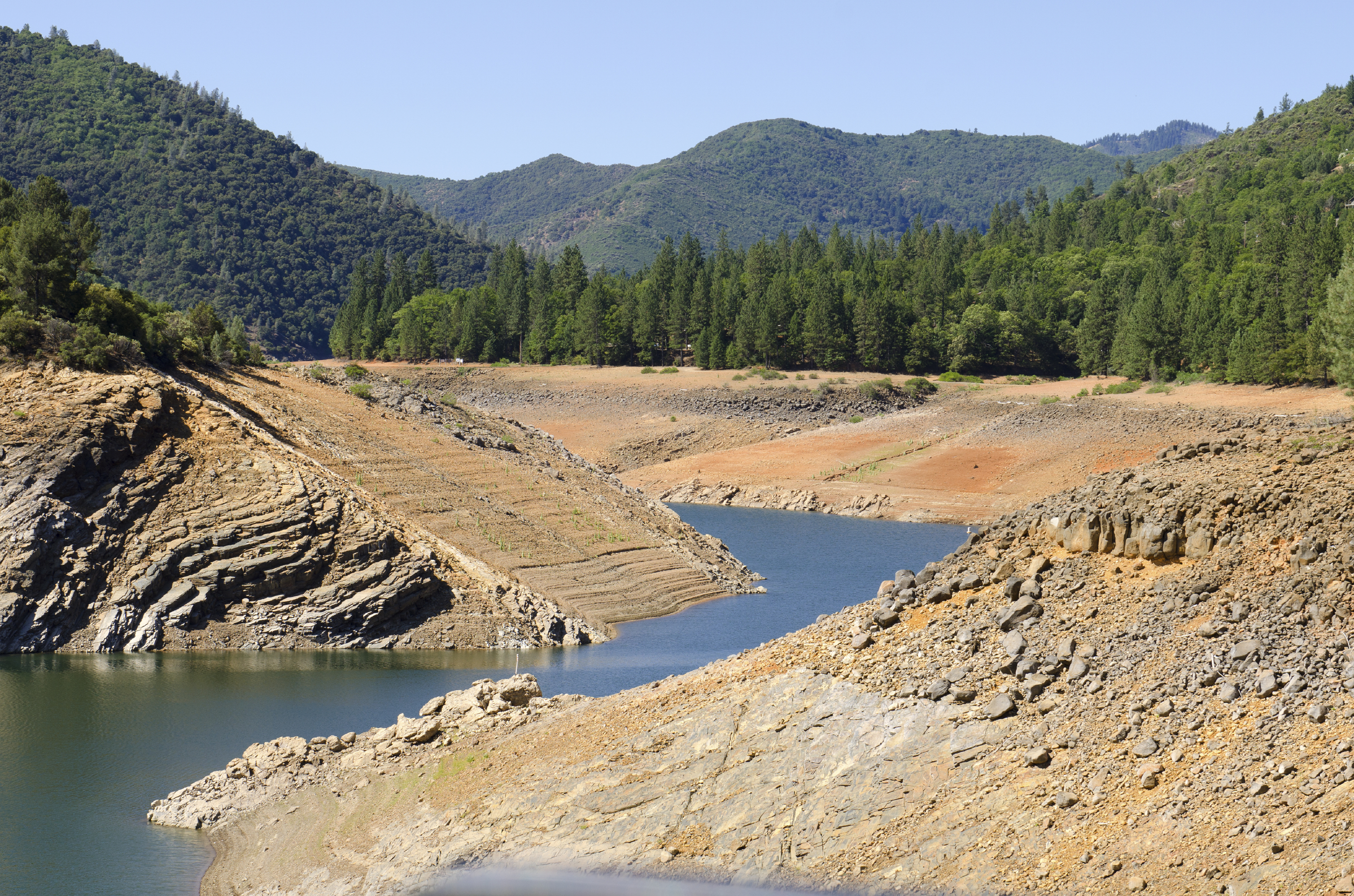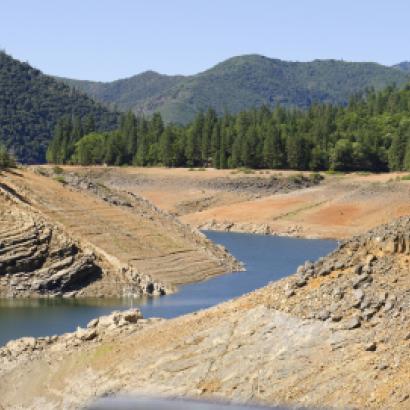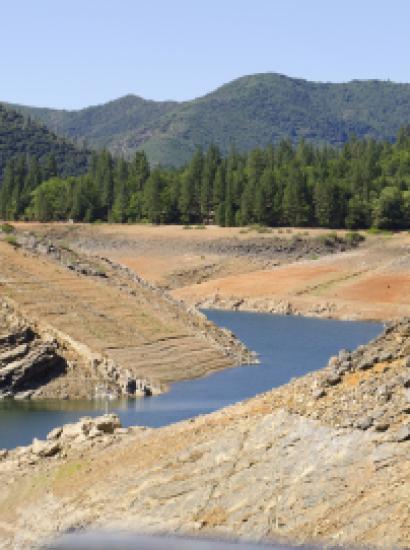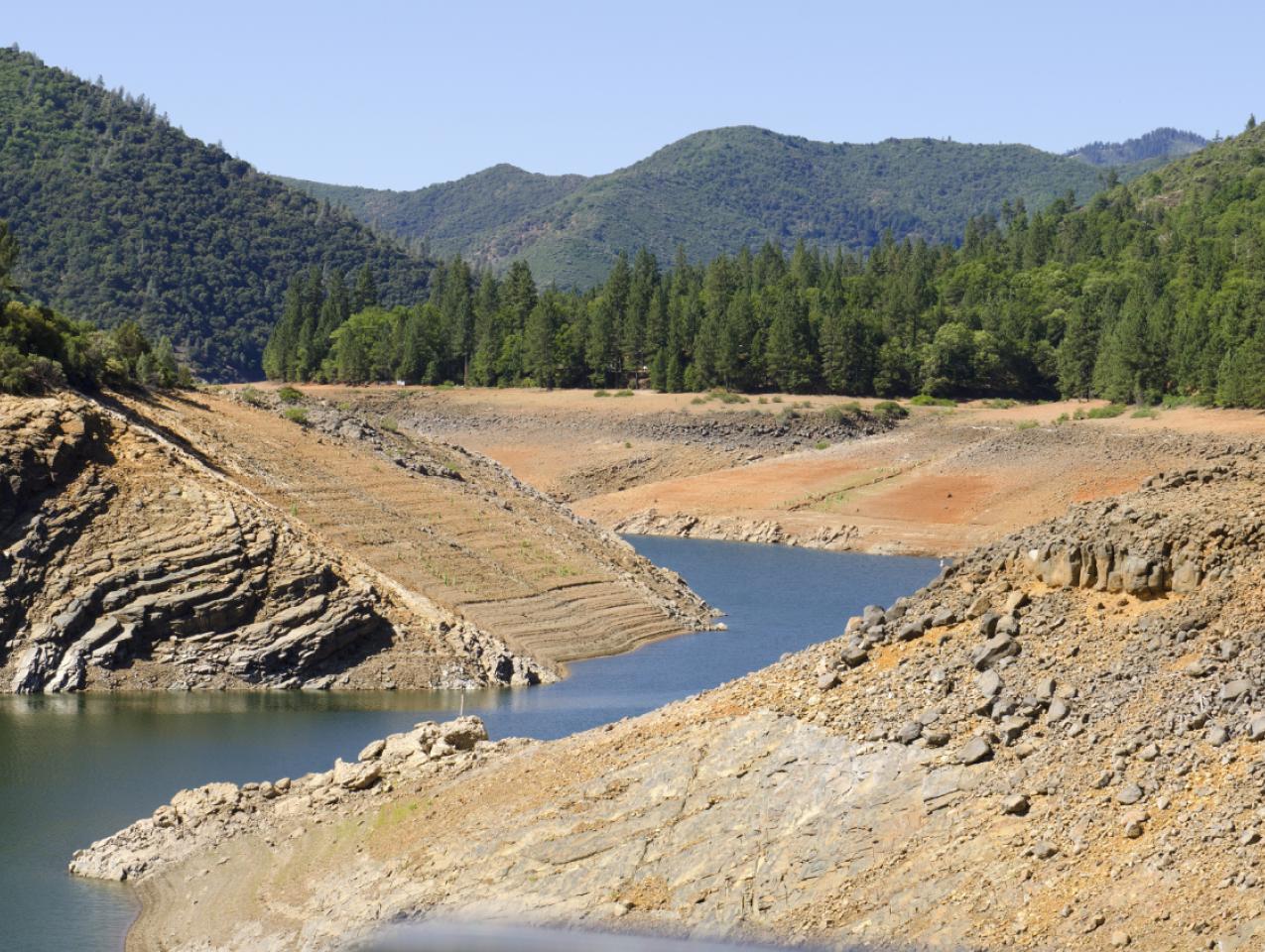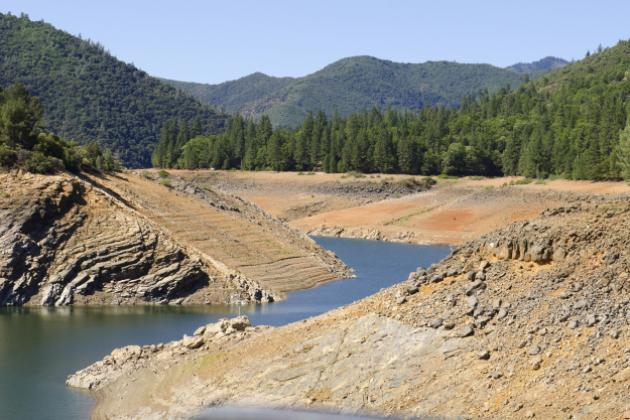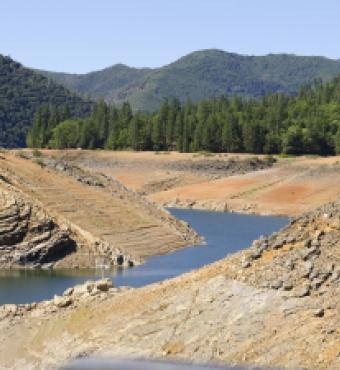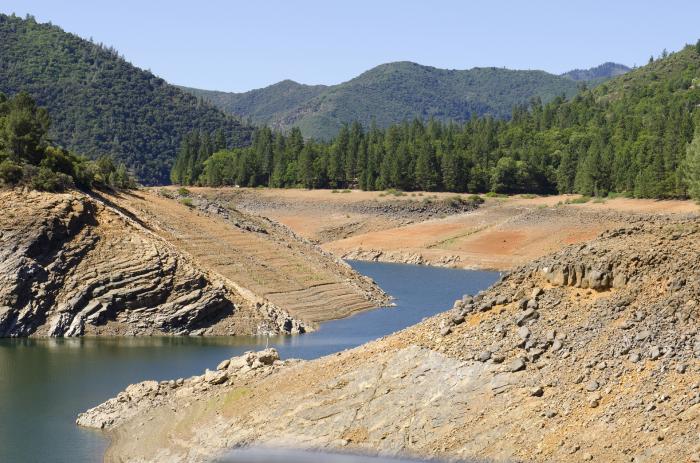Until the arrival of a winter storm recently, it had been almost a year since Los Angeles residents felt any real rain, leaving the city at 9 percent of normal precipitation. The snow pack, especially in the southern Sierra Nevada mountains, remains critically low. Meteorologists point to a strengthening La Nina weather pattern in the Pacific, which typically brings drier weather. A stubborn ridge of high pressure in the Pacific that contributed to the previous drought is blocking storms from reaching Southern California in particular. The drought that ended in 2017 may be returning. Historical tree-ring data reveal that this could be normal. California has historically experienced decades-long droughts, with the recent period of the last 150 years or so unusually wet. Climate-changes specialists also argue also that swings in weather patterns in the semi-arid U.S. West may bring cycles of serious drought followed by short, wet periods. All of this suggests that water will become more valuable.
Supplies of water will be short, and demands will rise from farmers, urban dwellers, companies, and environmentalists. Once again, California, and the western United States, will be faced with the question of how to respond. Will water rights and markets be the primary mechanism for conserving and distributing water, or will it be government command-and-control regulation? The answer has major implications for the semi-arid region’s economy, given the centrality of water in daily life.
The western United States is one of the few places where the question of which institution governs water rights is an open one. In most parts of the world, water is explicitly owned by the state, and there are no private property rights. Regulation and decree are the only options, and with corrupt or weak governments, water is often wasted as an open-access resource. In the eastern United States and parts of Europe, riparian rights grant landowners the use of adjacent stream water, but it cannot be separated from the land via water markets. Only in Australia, Chile, and the western United States and Canada can water be traded separately from the land via a market. In the western United States, private water rights to specified amounts are based on prior appropriation or first-possession. Most rights were granted in the late nineteenth and early twentieth centuries to agriculture, but gradually many are being sold or leased by irrigators for urban, industrial, and environmental uses. The issue is whether or not markets will be expanded or sidelined if drought returns.
Past experience is not encouraging. Most of California’s recent drought response was via government directives. In a series of Executive Orders in 2014, 2015, and 2016, Governor Jerry Brown directed regulators to implement mandatory water reductions in consumption in urban areas by 25 percent. Further, the state initiated programs to replace 50 million square feet of lawn with drought-tolerant landscaping; provide consumer rebates to replace old appliances with more water efficient ones; require campuses, golf courses, and other large landscapes to make significant water usage cuts; prohibit new housing developments from using potable water unless drip irrigation is used; and ban watering ornamental grasses in public street medians. None of these measures, of course, would be needed if market prices were to drift higher, and citizens made their own decisions about how much water was necessary for landscape and household use.
Further, in June 2015, some 100 of California’s most senior water rights holders in the Central Valley had their water uses restricted by state regulators, and approximately 200 farmers in the Sacramento Delta region agreed to 25 percent reductions in water diversions in order to avoid stricter state controls. These cutbacks in water delivery and the associated fallowing of farmland were expected to rise by 620,000 acres, affecting local communities and agricultural labor that largely includes Hispanic farmworkers, among the poorest people in the state. Finally, state regulators are considering minimum stream-flow regulations at the behest of various environmental groups to address declining stream levels.
Such mandates, however, would most impair the majority of senior water-rights holders, whose water is the basis for water trades. These senior rights have the most secure legal claim on defined amounts of water. More junior owners receive what is left over, and in low stream-flow years they may receive less water than their formal right (contingent on available water) suggests. For these reasons, buyers of water seek out senior rights holders. But these minimum stream-flow mandates would necessarily reduce the water available to those with senior rights. Under these policies, the environment would become the first claimant on water with the residual divided among all private water rights. Seniors bear the brunt of the mandates because juniors might not receive any water during dry years under the current, well-understood rights system. With the mandates, seniors might not receive any water either, making them far less attractive for water markets.
The alternative to mandated reductions to maintain stream flows is to purchase the water. Doing so forces state agencies and non-government organizations to determine how much water they actually need and are willing to pay for. Payments also compensate rights holders for their water and motivate them to conserve more water to release for environmental, urban, and industrial uses. Finally, such purchases take place within a market, reaffirming water rights and exchange as a principal mechanism for governing the allocation, conservation, and use of water.
To further illustrate the problem of regulatory mandates, their inflexibilities, and their costs, consider the Endangered Species Act (ESA). Passed in 1973, the law has become extremely controversial due to the lack of cost-benefit analysis in its sweeping land-use controls to protect the habitat of listed species. In California, the ESA often blocks water flows from the wet north to the dry south. Beginning in 2008, in response to drought, the biological opinions of federal and state agencies and related court orders sharply curtailed flows across the Sacramento Delta in the center of the state to protect endangered fish species. The fish have not recovered, but the ESA makes their value virtually infinite. While neither advocacy groups nor bureaucratic agencies bear the costs of their actions, those affected by reduced access to water certainly do.
A recent study found that the economic impact in the San Joaquin Valley from reduced water flows across the Delta in 2009 alone was $146 million in lost agricultural revenue; nearly 130,000 acres of land fallowed; a fall in agricultural output of almost $319 million; and 3,000 lost farm jobs. These costs do not include the impact on urban water supply organizations, such as the Metropolitan Water District of Southern California that had to shift from buying or leasing water north of the Delta (often rice farmers) to alternative supply sources, such as the already over-committed Colorado River. Colorado River water requires both additional treatment as well as substantial pumping costs to move it to Southern California.
Indeed, these disruptions to water trading hinder an already underexploited use of water markets. Currently, only some 2-4 percent of annual consumption of water is traded in any western state, suggesting that there is great potential for expansion of water markets. Indeed, the California drought ought to have resulted in an uptick in market activity, but that did not happen, despite the fact that there were more willing sellers and buyers who could use the state’s massive network of canals to move water. A major reason for limited market trading during drought is a costly, slow, and resistant regulatory process. All trades that involve changes in location (especially out-of-basin), nature of use, and timing require regulatory review to insure that other water users are not harmed by the sale. But much opposition to proposed sales comes from outsiders and not from other rights holders on a stream. Regulators distrust a market system that weakens their regulatory discretion and limits their ability to respond to the demands of organized lobby groups, who seek control over water without paying for it. Neither unelected agency officials nor elected politicians are residual claimants to the added values from moving water or conserving it, and they do not bear the direct costs their decisions impose when markets are impeded.
Market traders, in stark contrast, are residual claimants to the benefits and costs of market activities that are in response to drought conditions. As a result, their actions are far more likely to lead to efficient, rapid responses to short falls in supply and rising demand. Moreover, market exchanges reveal the values of water in alternative uses, information that is critical for management and reallocation of this critical resource. How would regulators know relative values of water in urban, irrigation, environmental uses? Only by what lobby groups and a few consultants tell them. Markets by contrast can attract far more buyers and sellers who are willing to pay and receive and their actions generate evidence on competing values. The differences can be stark. For example, in Nevada’s Reno/Truckee Basin, the median price of 1,025 agriculture-to-urban water rights sales between 2002 and 2009 (in 2008 prices) was $17,685/acre-foot (an acre-foot = 325,851 gallons, about enough to meet the needs of four people for a year), whereas for 13 agriculture-to-agriculture water rights sales over the same period, the median price was $1,500/acre-foot, a difference in value of over 12 times. The regulatory process does not work in this way. It relies on a much smaller network and the coercive power of the state to direct water allocation and use. Regulatory decrees do not reveal water value information as a market might, nor do regulators respond to it. They have their own agendas, not alternative water values. Accordingly, much resource value can be lost and incentives for wise use dampened.
Given California’s response to managing urban water demand during drought through government directives, it is useful to explore the alternative of greater reliance on urban water pricing. Increasing block-rate or tier pricing is a known mechanism for encouraging conservation. It is used broadly, but only in a few communities is this pricing structure the primary method of regulating water demand. With block-rate pricing, basic human consumption is priced low, but as household per-capita use rises, prices jump accordingly. Tucson, a desert city in Arizona, has used steep block pricing as a principal management tool for a long time. As a result, few Tucson households have lawns, a decision made voluntarily, based on water pricing.
In contrast, in the Phoenix area, cities typically use flat water rates that shift between summer and winter. Flat rates do not encourage conservation to the same degree, and the Phoenix area resembles a green oasis. Depending on the time of year, the Tucson water charge was 61 percent higher than the highest Phoenix price. In 2010, the average Phoenix resident consumed 123 gallons of water per day, whereas the average residential consumption in Tucson was about 20 percent less at 102 gallons.
Flat rates are politically popular and they appear fair, but in fact, they are not equitable in the face of income elasticity-of-demand estimates that show that the rich use far more water than the poor. Further, they are not effective in encouraging water-use adjustments, unless the entire rate is shifted significantly. The effect of pricing depends upon the price, and in California and other states, water supply organizations generally hold to flat, cost-of-service pricing, which limits the use of increasing-tiered pricing. A recent California court decision limited use of block or tiered-rate pricing, wrongly arguing that it was not equitable. Politicians have not been vocal in their criticism of this ruling nor shown much effort to appeal it. Leaving water pricing uniformly low reduces incentives for citizens to adjust voluntarily as the Tucson/Phoenix example reveals and allows for regulatory mandates to fill the gap.
What other factors impede water markets? An important one is when local governments, acting at the behest of local interests, usually not water rights holders, restrict water sales from their jurisdictions. In California, 11 counties block the export of water. Further, at least since the Los Angeles Department of Water and Power purchased the farms and water rights in the Owens Valley northeast of the city in the early twentieth century, there has been opposition in rural areas to the movement of water via markets to urban uses. Most recently, the July 13, 2017 Los Angeles Times published a story entitled “L.A. Took Their Water and Land a Century Ago. Now the Owens Valley is Fighting Back.” The description in this article and many others like it is based on a myth of water theft by savvy urban interests from unsuspecting farmers promoted by political agendas hostile to markets. The underlying belief is that markets are inherently unjust and that only that state will act in the public interest. But there is very little empirical evidence to support this view.
In fact, Los Angeles bought the water rights openly over a 30-year period, beginning in 1905, and over time, more and more of the small farmers in the Owen’s Valley took advantage of this opportunity. Their farms were too small; too arid; and growing seasons too limited to compete well with production in other parts of California. Moreover, the agricultural depression in the 1920s devastated many small farms throughout the region. For these reasons, most small farmers sold eagerly and did far better financially by selling their lands and water rights, than had they tried to stay in farming. Moreover, Los Angeles removed the properties from production and retired them in a relatively pristine state that remains today.
Elsewhere in the western United States, there is opposition to the permanent movement of water from agriculture to urban uses. For example, there is resistance in the Arkansas Valley of Colorado to water transfers to the Denver metropolitan area. There is little data, however, to support the hypothesis that long-term land use patterns or the survival of small, rural towns are changed fundamentally by water transfers, relative to other macroeconomic factors. Unlike in Owens Valley, which had no real long-term agricultural basis, farms in the Arkansas Valley and elsewhere have agricultural potential, and as a result, only relatively small portions of farm water are sold with the rest retained for production. Much of the opposition to water trades comes not from different water rights owners, but from other interest groups. Political processes, however, respond to interest group mobilization and lobbying. Keeping all water in these remote, rural areas is unlikely to halt the widespread decline in rural populations and the vibrancy of rural communities, relative to larger urban ones where economic and social opportunities are far greater.
Policy discussions regarding water and drought invariably focus on regulating supply and demand rather than markets. There clearly is a role for government in protecting property rights, metering, providing a platform for market trades, and ensuring that critical third-party harm does not occur if these costs are not internalized sufficiently by the trading parties. This government role, however, is far smaller than is commonly asserted. Water markets provide a flexible, effective, and more equitable way of adapting to a dynamic world of changing human demands for water and uncertain supplies of it. Economic and social welfare will be enhanced if water rights and market trades are the principal mechanisms to address the challenges presented by drought in California and elsewhere in the semi-arid West.







